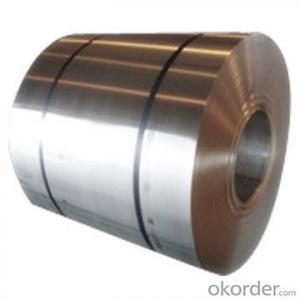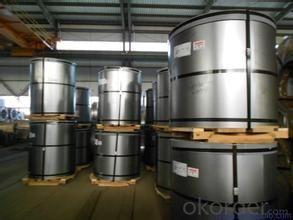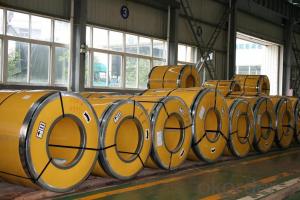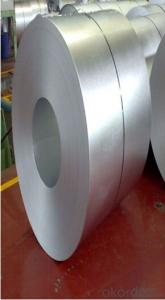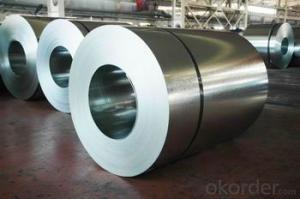Prime Quality Hot Dipped GI Steel Sheets in Coils
- Loading Port:
- Shanghai
- Payment Terms:
- TT OR LC
- Min Order Qty:
- 100 m.t.
- Supply Capability:
- 10000 m.t./month
OKorder Service Pledge
OKorder Financial Service
You Might Also Like
Prime Quality Hot Dipped GI Steel Sheets in Coils
1.Structure of Prime Quality Hot Dipped GI Steel Sheets in Coils
Prime Quality Hot Dipped GI Steel Sheets in Coils is one kinds of building material on construction. Galvanized coil, steel sheet in melting zinc trough, the sticking of a layer of zinc sheet. At present mainly adopts continuous galvanizing process, namely the continuous roll of steel plate in the melt zinc plating tank made of galvanized steel sheet; Alloying of galvanized steel. This kind of steel plate is made by hot dip method, but after the slot, immediately heated to a temperature of about 500 ℃, it make the generation of zinc and iron alloy membrane. This kind of galvanized volumes with good coating of the sex and weldability.
Color coated steel coil(ppgi) is made by the processes of chemical preconditioning, first coating, precision coating and so on through a continuous rapid unit internationally in recent three decades. Its quality is more uniform and stable than the one whose surface of the formed metal is coated single or brushed one.
2.Main Features of Prime Quality Hot Dipped GI Steel Sheets in Coils.
1) Rust-proof
2) Water-proof
3)Durable using
3. Prime Quality Hot Dipped GI Steel Sheets in Coils Images
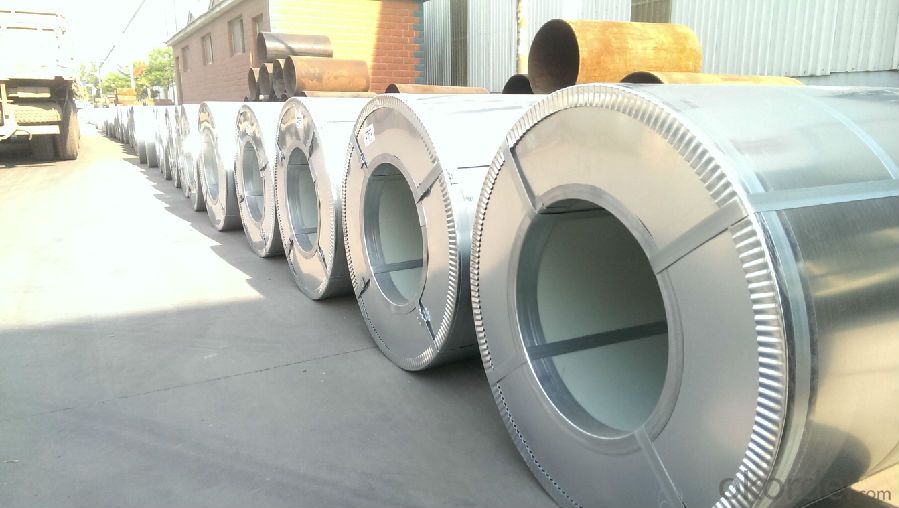
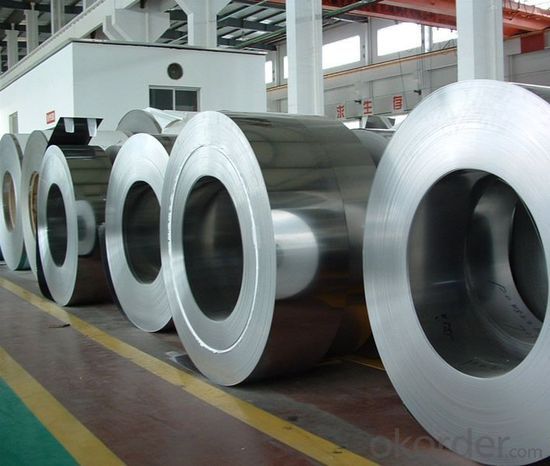
4. Prime Quality Hot Dipped GI Steel Sheets in Coils Specification
1)Based raw material: Hot rolled steel coils or Cold rolled steel coils
2) Thickness
3) Width
4)Coating mass
5) Spangle
6)Surface treatment
7)Coil inner diameter
5.FAQ of Prime Quality Hot Dipped GI Steel Sheets in Coils
We have organized several common questions for our clients,may help you sincerely:
①How about your company?
A world class manufacturer & supplier of castings forging in carbon steel and alloy steel,is one of the large-scale professional investment casting production bases in China,consisting of both casting foundry forging and machining factory. Annually more than 8000 tons Precision casting and forging parts are exported to markets in Europe,America and Japan. OEM casting and forging service available according to customer’s requirements.
②How to guarantee the quality of the products?
We have established the international advanced quality management system,every link from raw material to final product we have strict quality test;We resolutely put an end to unqualified products flowing into the market. At the same time, we will provide necessary follow-up service assurance.
③What is an whole inquiry incluing?
Prime Quality Hot Dipped GI Steel Sheets in Coils
Size: 0.14-0.6mm*750-1250mm
Zinc Coating: 60-150g/m2
Surface Processing: regular spangle; minimized spangle
Chemical Processing: chromated, passivated, unoiled, hot dip galvanized
Coil ID: 508/610mm
Packing: the standard export package
Application: PPGI coil;construction,hardware,
home appliances,interior decoration etc.
- Q: I got my dog those nice looking stainless steel water and food bowls (looks great next to my kitchen appliances...haha). The thing is my dog will drink from the toilet or a plastic bowl but not out of his bowl...I was wondering if those stainless steel bowls change the taste of food and water?
- It is possible. Stainless steel is usually mixed with a few other metal compounds to create certain properties for it, like iron for durability, and nickel and silver for luster(so they look good in your house!). It is very possible that your dog is tasting some of those metals in his water, and since his senses are a lot keener tan ours, it may bother him. My dogs drink out of a stainless steel bowl, and they do fine, so it may be your dog's own personal preference to drink out of someting non-metal. Just give in to him and give him a nice-looking plastic or ceramic bowl. (Hint: Ceramic keeps his water cold longer!)
- Q: Why is the selection of steel building erector of extreme importance while starting a new steel building project?
- Steel building erectors play an important role as they are well versed with all the ups and downs of erecting a steel building and can prevent your construction project from unnecessary delays. There are lot of inexperienced steel building erectors in the market who can offer you their services at a much cheaper rate. Be cautious! It never works in the long run. A qualified steel building erector will always provide an initial professional insight of your project and cost effective solutions for your project.
- Q: What are the different methods of heat treatment for steel coils?
- Steel coils can undergo various heat treatment methods, each offering unique benefits and applications. One method is annealing, where steel coils are heated to a high temperature and gradually cooled in a controlled environment. This relieves internal stresses, enhances ductility, and refines the grain structure, resulting in softer and more machinable steel. Another method, normalizing, is similar to annealing but involves a faster cooling process. It aims to refine the grain structure and achieve uniform hardness throughout the coils. Normalizing also eliminates residual stresses and improves mechanical properties. Quenching and tempering is a two-step process that begins with heating the coils to a high temperature and rapidly cooling them in a quenching medium like oil or water. This creates a hard and brittle phase called martensite. To enhance toughness and reduce brittleness, the coils are reheated to a lower temperature and held there for a specific duration, a process known as tempering. Tempering helps decrease internal stresses and increase ductility and toughness. Case hardening is another method used to increase the surface hardness of steel coils while maintaining a soft and ductile core. This involves heating the coils in a carbon-rich atmosphere, allowing carbon to diffuse into the surface layer. The result is a hard outer layer, known as the case, while the core retains desired mechanical properties. Stress relieving is performed by heating the coils to a specific temperature and holding them there for a sufficient time. This minimizes residual stresses from previous manufacturing or heat treatment processes. Stress relieving improves dimensional stability, reduces the risk of distortion or cracking, and enhances overall performance. The choice of heat treatment method depends on desired properties, intended application, and specific requirements of the end product. Each method has its own advantages and can be customized to achieve the desired balance between hardness, toughness, ductility, and other mechanical properties.
- Q: During fatigue testing of any material (especially for steels), why is strain-control mode preferred over stress control mode?
- because metals, like steel, are ductile and will stretch before breaking. Straining the metal is stretching it, stressing the metal is applying a shearing force or bending until there is an actual metal failure. A sheet metal strap 1inch across and 24 gauge metal is commonly used to support metal ducting systems in construction. These have an average strain to failure weight load as high as 16,200 lbs. As reported by the smacna index, they will safely hold 6800 pounds. Of more interest is the screws used to hold the strap to the duct. While they are grade 3, fairly strong, they strain to 1400 pounds when properly installed, and are safely able to support 650 pounds, unless they are overtorqued (stripped) and this quickly drops to 400 pounds and 125 pounds...big difference.
- Q: How are steel coils inspected for coil weight accuracy after processing?
- Steel coils are typically inspected for coil weight accuracy after processing by using weighing scales or load cells. These devices are placed underneath the coil or integrated into the production line to measure the weight accurately. The coil's weight is then compared to the desired weight specified by the customer or industry standards to ensure accuracy.
- Q: What is the process of galvanizing steel coils?
- The process of galvanizing steel coils involves immersing them in a bath of molten zinc to create a protective coating. The coils are first cleaned and then passed through a series of chemical baths to prepare the surface for galvanization. Afterward, they are dipped into the molten zinc, which bonds to the steel to form a corrosion-resistant layer. Once coated, the coils are cooled, inspected, and prepared for shipment or further processing.
- Q: What are the different grades of steel used in coil production?
- There are several grades of steel used in coil production, including low carbon steel, high carbon steel, stainless steel, and galvanized steel. Each grade has its own unique properties and is chosen based on the specific requirements of the coil application.
- Q: What are the main raw materials used in making steel coils?
- The main raw materials used in making steel coils are iron ore, coal, and limestone.
- Q: gigantic navy ships made of steel float, why??
- Believe it or not - A steel boat floats for the exact same reason all boats float. And the very best - easy to understand explanation of this (with pictures) is at the link below.
- Q: How are steel coils tested for dimensional accuracy?
- Steel coils are tested for dimensional accuracy through various methods such as measuring their width, length, thickness, and diameter using specialized tools like calipers, micrometers, or laser measurement systems. These measurements are compared against the specified tolerances provided by the manufacturer to ensure that the steel coils meet the required dimensional standards.
Send your message to us
Prime Quality Hot Dipped GI Steel Sheets in Coils
- Loading Port:
- Shanghai
- Payment Terms:
- TT OR LC
- Min Order Qty:
- 100 m.t.
- Supply Capability:
- 10000 m.t./month
OKorder Service Pledge
OKorder Financial Service
Similar products
Hot products
Hot Searches
Related keywords
